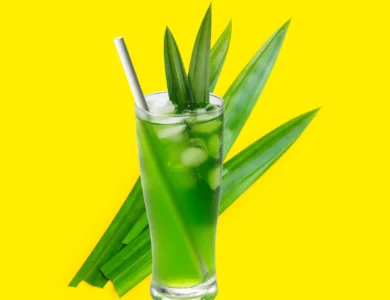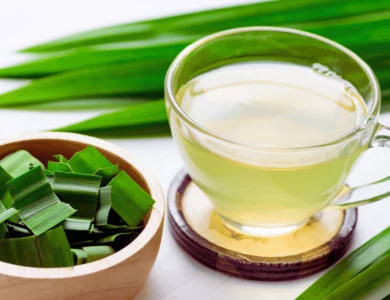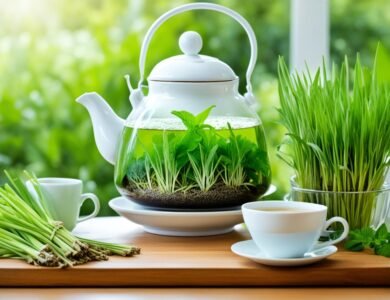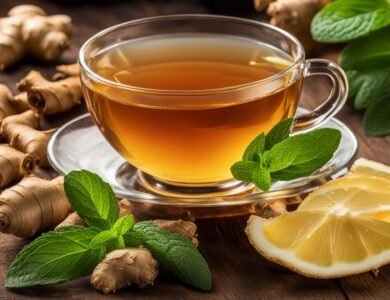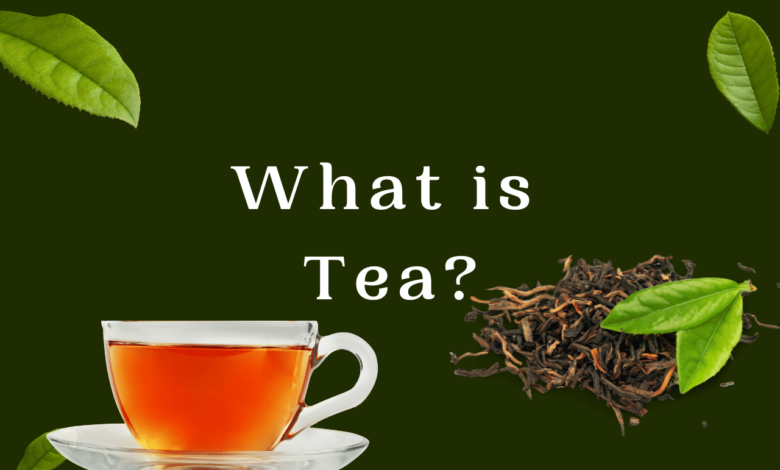
Tea is a beloved beverage that has been enjoyed for centuries across various cultures and nations. It is a versatile drink that can be enjoyed hot or cold, and it comes in a wide range of flavours and varieties. From its ancient origins to its modern-day popularity, tea has become significant in the lives of many. In this article, we will explore the origins of tea, its health benefits, different types of tea, and how to brew the perfect cup. So grab your favourite teacup and join and let’s have a hearty sip of knowledge from the world of tea.
What is Tea? – The Camellia Sinensis plant
At its core, tea is a drink derived from the leaves of the Camellia sinensis plant. The leaves are carefully harvested, processed, and brewed to extract the flavours and aromas that make tea so delightful. It has a long and fascinating history, deeply rooted in the traditions and customs of different regions. Tea is not only a refreshing drink but also a symbol of relaxation, comfort, and social connection. So, what exactly is tea and what makes it so special? Let’s explore.
The leaves of the Camellia sinensis are plucked, dried, and processed in different ways to create various types of tea. The distinct characteristics of tea, such as flavour, aroma, and colour, are influenced by factors such as the processing method, growing conditions, and oxidation levels.
Tea is a versatile beverage that offers a wide range of flavours to suit different tastes. It can be enjoyed hot or cold, and its natural properties make it an ideal choice for both relaxation and rejuvenation. Whether you prefer a delicate and floral white tea or a robust and full-bodied black tea, there is a tea to cater to every palate.
The Origins of Tea
Tea has a rich and storied history that dates back thousands of years. Its origins can be traced back to ancient China, where it was discovered by accident. According to legend, Emperor Shen Nong was boiling water when leaves from a nearby tree fell into his pot. Intrigued by the resulting infusion, he tasted it and found it to be pleasant and invigorating. This marked the discovery of tea and the beginning of its journey as a popular beverage.
From China, the cultivation and consumption of tea spread to other parts of Asia, including Japan, India, and Korea. Each region developed its unique tea traditions and techniques, resulting in a diverse array of tea varieties. Over time, tea became an integral part of daily life, used for medicinal purposes, social gatherings, and as a symbol of hospitality.
The Health Benefits of Tea
Tea is not only a flavorful beverage but also offers several health benefits. It is rich in bioactive compounds such as polyphenols, flavonoids, and antioxidants, which contribute to its therapeutic properties. Let’s explore some of the potential health benefits associated with tea consumption:
- Antioxidant Power: Tea is a rich source of antioxidants that help protect the body against oxidative stress and free radicals. These antioxidants, such as catechins and epicatechins, have been linked to a reduced risk of chronic diseases like heart disease and certain types of cancer.
- Heart Health: Regular tea consumption has been associated with a lower risk of heart disease. The antioxidants in tea help improve heart health by reducing inflammation, improving blood vessel function, and lowering cholesterol levels. Green tea, in particular, has been widely studied for its cardiovascular benefits.
- Weight Management: Tea, especially green tea, has been shown to aid in weight management. The combination of caffeine and catechins in green tea can help increase metabolism and fat oxidation, potentially assisting in weight loss when combined with a balanced diet and exercise.
- Brain Health: Tea contains caffeine and L-theanine, which have been found to enhance cognitive function and improve focus. The combination of these compounds can promote alertness and mental clarity without the jittery effects often associated with coffee.
- Digestive Health: Some types of tea, such as herbal teas like chamomile and peppermint, have been used for centuries to aid digestion and soothe gastrointestinal discomfort. These teas possess anti-inflammatory properties that can help alleviate symptoms like bloating, indigestion, and nausea.
- Immune Support: Tea contains compounds that support the immune system, such as catechins and polyphenols. Regular tea consumption has been associated with a stronger immune response, helping to ward off common illnesses and infections.
- Boosted Immunity: Some studies suggest that the polyphenols found in tea may help enhance the immune system, promoting overall health and well-being. Regular tea consumption has been linked to a reduced incidence of common illnesses like the flu.
- Mental Alertness: Tea contains caffeine, a natural stimulant that can help improve focus, concentration, and mental alertness. However, tea also contains an amino acid called L-theanine, which has calming properties and can promote a sense of relaxation without causing the jittery side effects often associated with coffee.
It’s important to note that while tea can offer potential health benefits, it is not a substitute for medical treatment or a healthy lifestyle. Moreover, individual results may vary, and it should not be considered a cure-all for medical conditions. As a result, It’s always advisable to consult with a healthcare professional for personalized advice and guidance.
The Different Types of Tea
Tea comes in various types, each with its unique characteristics and flavours. Let’s explore some of the most popular types of tea:
- White Tea: White tea is the least processed of all the teas. It is made from young tea leaves and buds that are carefully dried to preserve their delicate flavours and natural sweetness. White tea has a subtle and nuanced flavour profile with notes of flowers and fruits. It is prized for its high antioxidant content and is often considered the purest form of tea.
- Yellow Tea: Yellow tea is a rare and highly prized tea variety. It undergoes a unique processing method that involves a slight oxidation and a gentle steaming or drying process. Yellow tea has a mellow and smooth taste with hints of sweetness and a slightly grassy aroma. It is known for its refreshing and soothing properties.
- Green Tea: Green tea is one of the most widely consumed types of tea around the world. It is made from tea leaves that are quickly heated or steamed after harvesting to prevent oxidation. This minimal processing helps retain the natural green colour and fresh flavours of the leaves. Green tea offers a range of tastes, from grassy and vegetal to nutty and floral, depending on the variety and origin.
- Oolong Tea: Oolong tea is a partially oxidized tea that falls between green tea and black tea in terms of flavour and colour. The oxidation level can vary, resulting in a wide range of oolong teas with varying profiles. Oolong teas can be light and floral, or they can be more robust and toasty. The flavour often evolves with multiple infusions, making it a tea connoisseur’s delight.
- Black Tea: Black tea is fully oxidized, resulting in a dark colour and robust flavors. It is the most widely consumed type of tea in the Western world and is often enjoyed with milk and sugar. Black tea can have bold, malty, or even smoky flavors, depending on the region and processing method. Assam, Darjeeling, and Ceylon are some well-known black tea varieties.
- Pu-erh Tea: Pu-erh tea is a fermented tea that undergoes aging and fermentation processes. It is known for its distinct earthy and mellow flavors, with some varieties developing deeper and richer tastes over time. Pu-erh tea is often compressed into cakes or bricks, allowing it to age gracefully and develop complex flavors.
- Herbal Tea: While technically not made from the Camellia sinensis plant, herbal teas are popular alternatives to traditional tea. They are made by infusing various herbs, flowers, fruits, and spices in hot water. Herbal teas come in a wide range of flavors and are often enjoyed for their soothing and therapeutic properties.
These are just a few examples of the many types of tea available. Each type has its own unique characteristics and can be enjoyed in various ways, such as hot, iced, or even as a base for flavorful tea lattes. Each type of tea offers a unique sensory experience, and exploring the different varieties can be a delightful journey for tea enthusiasts.
Brewing Recommendations for the Perfect Cup
Brewing tea is both an art and a science. To fully appreciate the flavors and aromas of tea, it’s essential to brew it correctly. Here are some tips to help you brew the perfect cup of tea:
- Choose Quality Tea: Start with high-quality tea leaves or tea bags for the best flavor. Look for reputable brands or specialty tea shops that offer a wide selection of teas.
- Measure the Tea: Use the recommended amount of tea leaves or tea bags based on the type of tea and the desired strength. As a general guideline, use approximately 1 teaspoon of loose-leaf tea or 1 tea bag per 8-ounce cup of water.
- Heat the Water: Bring fresh, cold water to the appropriate temperature for the type of tea you’re brewing. Different types of tea require different water temperatures to bring out their optimal flavors. Here are some general guidelines:
- White and green teas: Water temperature around 175°F to 185°F (80°C to 85°C).
- Oolong teas: Water temperature around 185°F to 205°F (85°C to 96°C).
- Black and pu-erh teas: Water temperature around 200°F to 212°F (93°C to 100°C).
- Steep the Tea: Place the tea leaves or tea bags in a teapot or a cup and pour the hot water over them. Let the tea steep for the recommended time based on the type of tea and your personal preference. Generally, steeping times range from 2 to 5 minutes, but it can vary. Longer steeping times can result in a stronger flavor, but be cautious not to oversteep as it can lead to bitterness.
- Strain or Remove the Tea Bags: Once the desired steeping time has passed, remove the tea leaves or tea bags from the water. If using loose-leaf tea, you can strain it using a tea strainer or infuser to separate the leaves from the liquid.
- Serve and Enjoy: Pour the brewed tea into cups or mugs, and savor the aroma and flavors. Some types of tea, such as oolong and pu-erh, can be steeped multiple times, with each infusion revealing different nuances of flavor. Experiment and discover your preferences.
- Add Accompaniments: Tea can be enjoyed as is or with accompaniments like honey, lemon, or milk. Adjust the additions based on your taste preferences and the type of tea you’re drinking.
For some people, brewing tea is an art. However, it is also a personal experience and it may take some practice to find the right balance of flavors and brewing techniques that suit your taste. Don’t be afraid to explore different teas and brewing methods to discover your favorites. The steeping time and water temperature can be adjusted to suit your taste. Don’t be afraid to experiment and explore different brewing methods to find your perfect cup of tea.
FAQs About Tea
- Does tea contain caffeine?
- Yes, tea naturally contains caffeine. However, the caffeine content can vary depending on the type of tea and the brewing method. Generally, black and pu-erh teas have higher caffeine levels, while white and green teas have lower amounts. Herbal teas, such as chamomile or peppermint, are naturally caffeine-free.
- Can I drink tea if I’m pregnant?
- While tea is generally considered safe during pregnancy, it’s important to moderate your caffeine intake. High levels of caffeine may pose risks to the developing fetus. It’s advisable to consult with your healthcare provider for personalized advice on caffeine consumption during pregnancy.
- Can I drink tea before bedtime?
- Some types of tea, particularly those with higher caffeine content, may interfere with sleep if consumed close to bedtime. It’s best to opt for caffeine-free herbal teas if you want a soothing beverage before sleep. Chamomile, lavender, or peppermint teas are popular choices for relaxation.
- Can I reuse tea leaves?
- Certain types of tea, such as oolong and pu-erh, can be steeped multiple times, allowing you to enjoy multiple infusions from the same leaves. Each infusion may reveal different flavours and nuances. However, other types of tea, especially green and white teas, are best enjoyed in single steeping.
- What is the best way to store tea?
- To maintain the freshness and flavor of tea, it’s important to store it properly. Keep tea leaves or tea bags in an airtight container away from light, moisture, and strong odors. Store them in a cool, dry place, such as a pantry or cupboard. Avoid storing tea near spices or other strongly scented items, as tea can absorb odors.
- Can children drink tea?
- It is generally recommended to limit caffeine consumption in children, as their bodies may be more sensitive to its effects. Herbal teas are a caffeine-free option and can be enjoyed by children. However, it’s always advisable to consult with a pediatrician for specific recommendations based on your child’s age and health.
Conclusion
Tea is a remarkable beverage with a fascinating history, diverse flavors, and potential health benefits. From the delicate sweetness of white tea to the robust richness of black tea, there is a tea to suit every taste preference. As you embark on your tea journey, explore different types, brewing methods, and flavors to discover your personal favorites. Embrace the warmth, comfort, and joy that a cup of tea brings, and let it be a delightful companion in your daily life.
